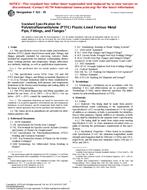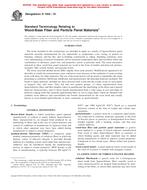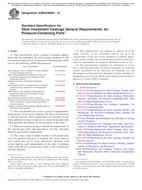1.1 This practice provides procedures which may be used in the design and analysis of studies to quantitatively assess the intensity of human axillary odor for the purpose of substantiating deodorant efficacy of personal care products.
1.2 This practice includes protocols for the selection and training of judges, selection of subjects, experimental design, and statistical analysis. This practice is limited to assessment of axillary odor by trained judges. Self-evaluation protocols are valid for selected sensory tasks but may be less sensitive.
1.3 With respect to the source of axillary odor, three groups of secretory glands are present in the axillae which participate to a greater or lesser extent in its production-eccrine, apocrine, and sebaceous. Axillary odor has been primarily ascribed to the apocrine gland secretion (1). Body odor intensity has been correlated with the volume of the secretory portion of the apocrine gland (2) and the density of the glands.
1.3.1 Apocrine glands are found primarily in the axillary vault in conjunction with axillary hairs (3). Pure apocrine sweat is sterile and odorless and axillary odor results from degradation of apocrine sweat by resident skin bacteria (4). High bacterial populations are found in moist regions of the body, especially in the axillae, providing the appropriate environment for growth (5).
1.3.2 Eccrine glands keep the axillae moist through thermally and emotionally induced secretions (6).
1.3.3 The sebaceous glands excrete higher molecular weight lipid materials which absorb and retain the volatile materials resulting from bacterial action (7). The aerobic diphtheroids are able to produce the typical acrid axillary odor and the micrococcaceae produce an isovaleric acid-like odor when incubated with apocrine sweat (8). Therefore, the most undesirable component of axillary odor is caused by degradation of apocrine sweat by particular bacteria normally found in the axillary vault.
1.4 Personal care products are sold and used primarily for their ability to reduce the perception of body odor not only by the individual using the product but also by individuals within the scope of contact. Deodorant protection may be achieved by these products through various modes of action. Antiperspirants achieve their primary efficacy by means of the action of inorganic salts on the eccrine gland production of sweat. Antimicrobial agents achieve deodorancy by inhibiting the growth and activity of the microflora in the axillary vault thus reducing the microbial decomposition of sweat and the consequent production of body odor. Absorbents function either by “binding” available moisture or malodorous substances. Fragrances are effective by altering the perception of malodor and increasing the degree of “pleasantness.” Other modes of control become important from time to time, representing changes in the state-of-the-art in product development.
1.5 The studies discussed herein are interpreted through the use of statistical tests of hypotheses. These hypotheses are usually of the form:
| The Deodorant Efficacy of Treatment A |
| = The Deodorant Efficacy of Treatment B |
1.5.1 It should be noted that failure to reject this hypothesis at a specified level of significance does not prove the hypothesis, but merely that the weight of evidence provided by the experiment is not sufficient to reject the hypothesis. This could occur because either: a) The hypothesis is close to truth and great experimental power would be required to reject it, or b) The experiment by design was low in power and, therefore, incapable of rejecting the hypothesis; even when it is far from true. This can occur due to design structure or low sample size. These facts must be taken into consideration when interpreting study results.
Product Details
- Published:
- 11/10/2002
- Number of Pages:
- 17
- File Size:
- 1 file , 160 KB
- Redline File Size:
- 2 files , 280 KB


